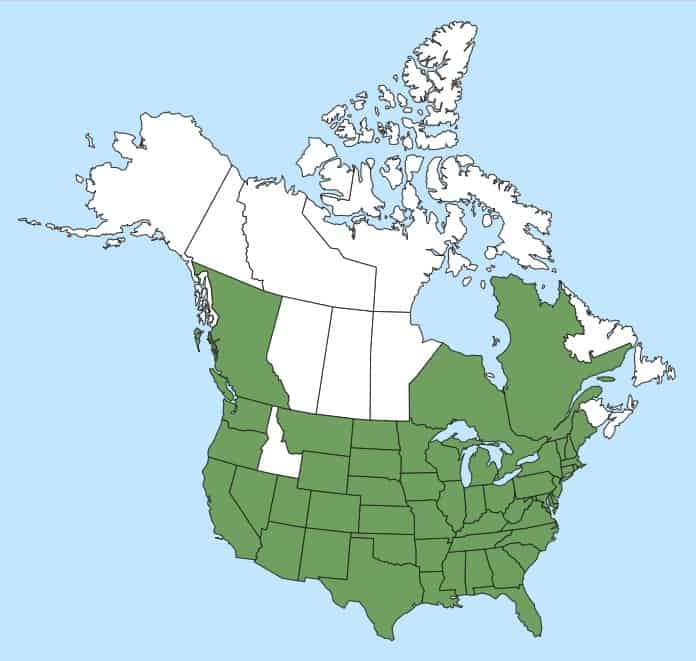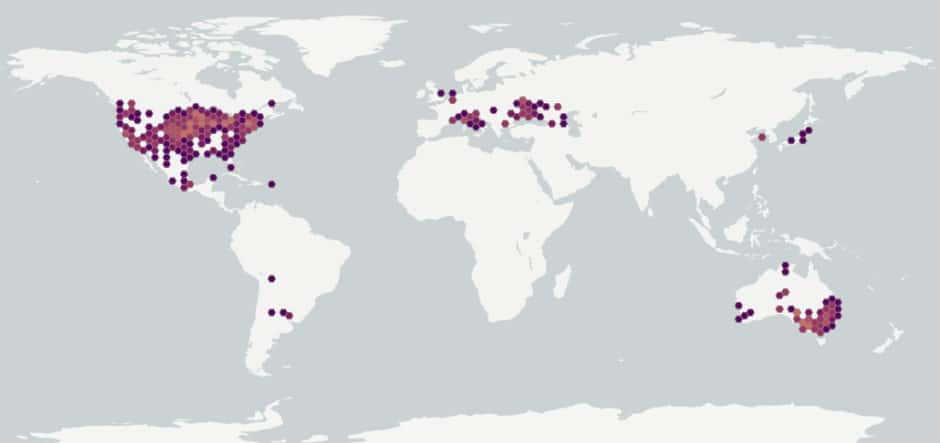Cenchrus longispinus
Overview
Aperçu
Regulation :
Remarques Réglementation:
- CFIA Weed Seeds Order - Class 2: Primary Noxious Weed Seeds
- Quarantine lists of countries e.g. China *may be updated without notice
Regulation Notes:
Distribution :
Répartition :
Native to North and South America (USDA-ARS 2021). Introduced to parts of Australia, Africa, Asia and Europe (CABI 2021). In Canada, the species occurs in British Columbia, Ontario and Quebec (Brouillet et al. 2010+).
Habitat and Crop Association :
Habitat et Cultures Associées :
Cultivated fields, irrigated orchards, vineyards, beaches, roadsides, railway lines, and other disturbed areas (Boydson 1997; Darbyshire 2003). A weed of Zea mays (corn) in the Great Plains region of North America (Anderson 1997).
Economic Use, cultivation area, and Weed Association :
Utilisation économique, zone de culture et association de mauvaises herbes :
Duration of Life Cycle :
Durée du cycle vital:
Annual
Dispersal Unit Type :
Type d’unité de dispersion :
Fascicle
General Information
RENSEIGNEMENTS GÉNÉRAUX
The fascicles of Cenchrus longispinus may be transported by farm equipment, contaminated hay, and other forage crops. Floating fascicles may travel through field irrigation into ditches (California Department of Food and Agriculture 2013).
.Identification
Identification
-
Fascicle
Size
- Fascicle length* : 4.8 – 9.7 mm ; width: 3.9 – 6.5 mm
*Note: minimum and maximum of 10 fascicles in a normal range of this species using image measurement (ISMA 2020)
Shape
- Fascicles are globose-shaped
Surface Texture
- Fascicles are densely covered in stiff spines, bristles and surface hairs
Colour
- Fascicle colour is dull or shiny straw yellow with purple-tipped spines
Other Features
- Fascicle has 2 types of spines: a series of flattened spines with fused bases and a ring of thin bristles around the base
- Fused spines are 0.5 – 0.9 mm wide at the base (Barkworth et al. 2003)
- Total number of bristles and spines is 45-75 (Barkworth et al. 2003)
- There are generally 2-3 spikelets in each fascicle (Barkworth et al. 2003)
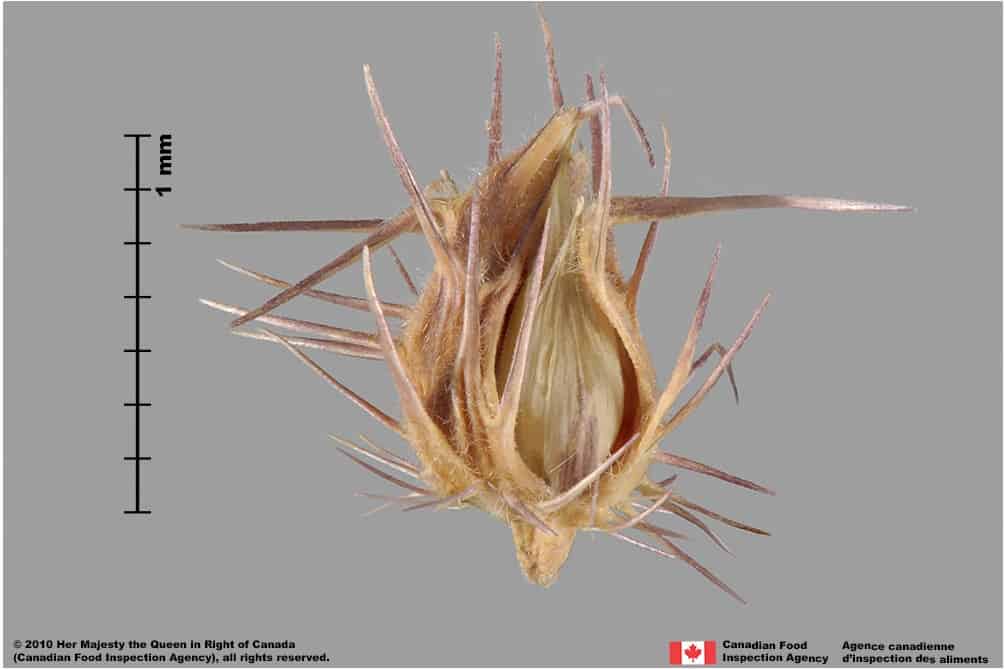
Long-spined sandbur (Cenchrus longispinus) bur, side view

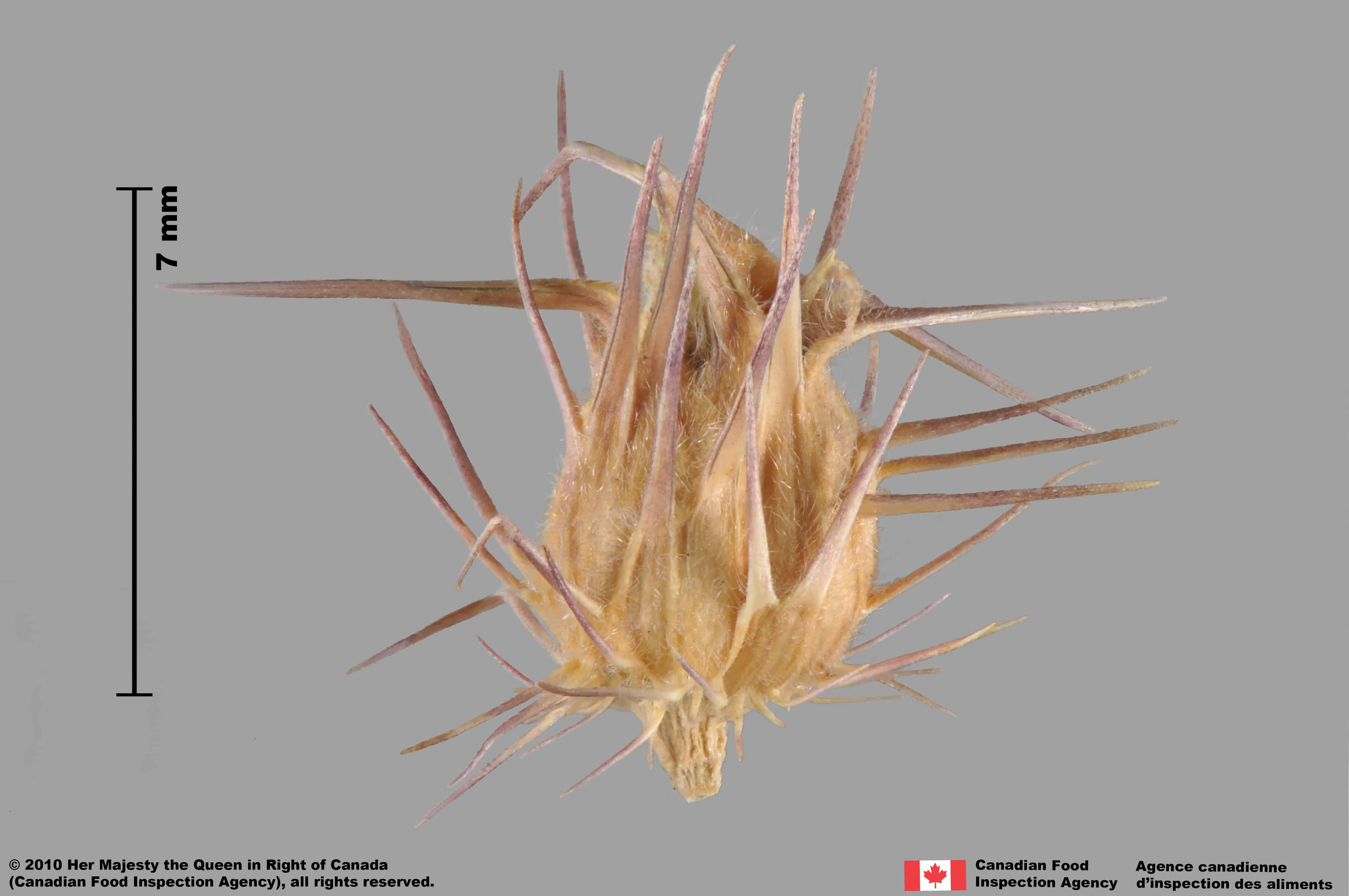
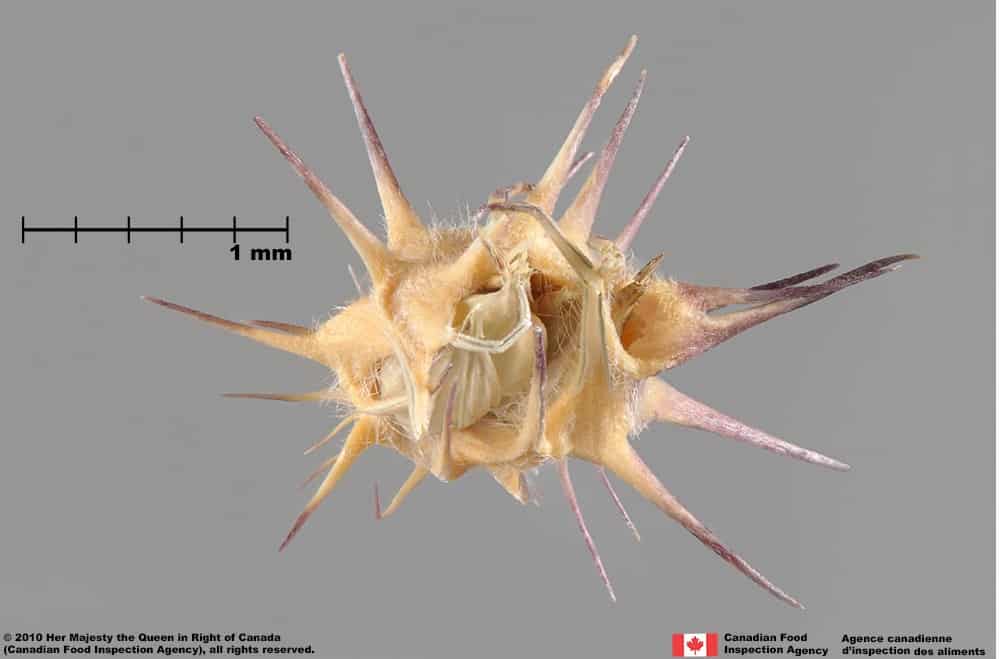
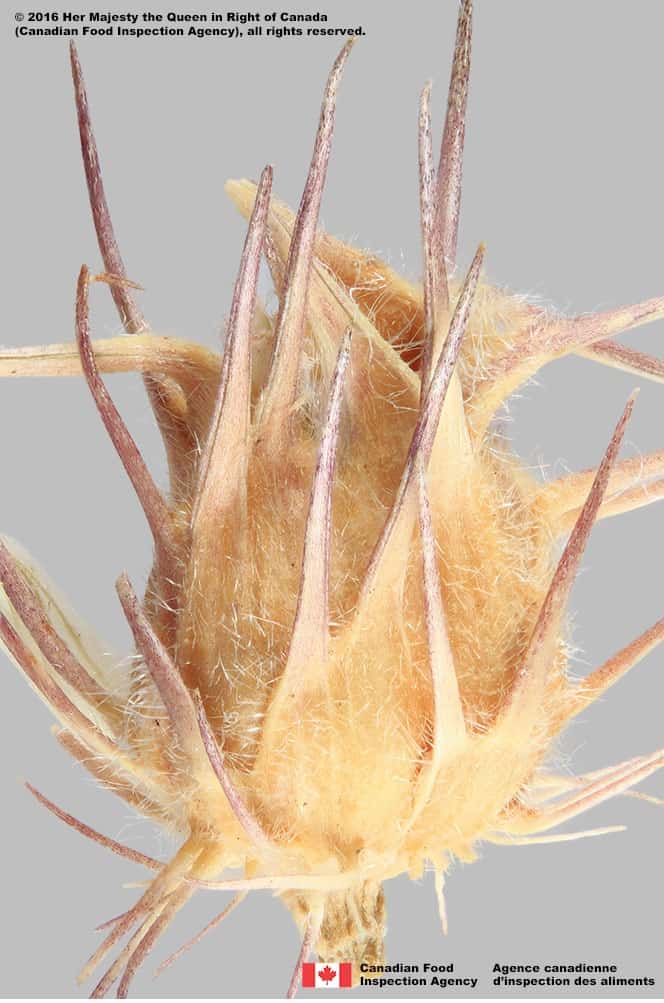
-
Spikelet
Size
- Spikelet length: 5.8 – 7.8 mm (Barkworth et al. 2003)
Shape
- Spikelets are teardrop shaped, compressed in edge view
Surface Texture
- Spikelet surface is smooth with several longitudinal nerves
Colour
- Spikelet is shiny light yellow coloured
Other Features
- Glumes are thin and papery textured
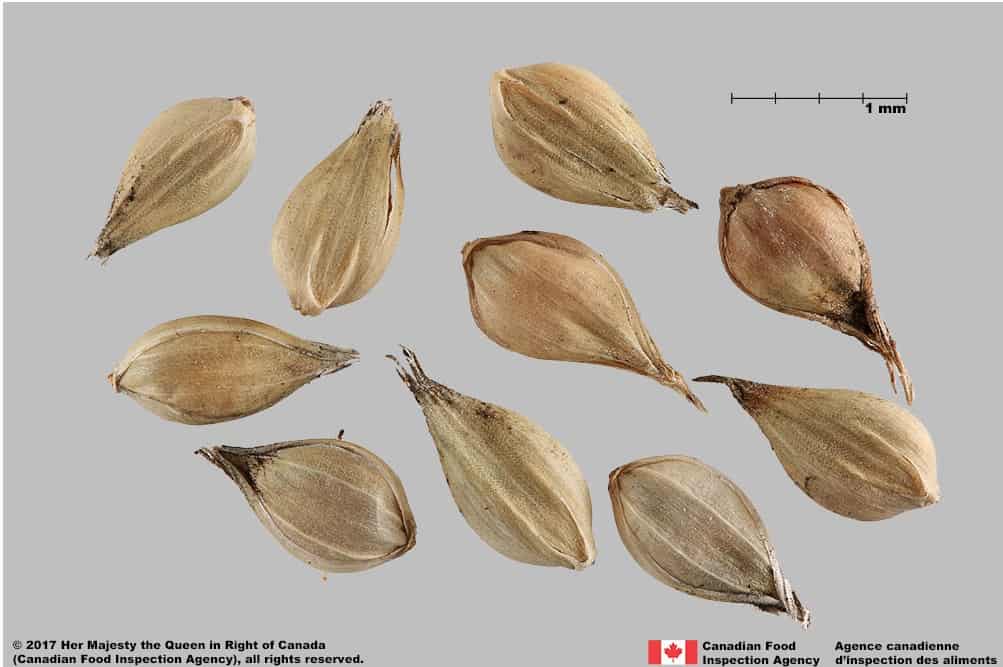
Long-spined sandbur (Cenchrus longispinus) spikelets

-
Floret
Size
- Floret length*: 4.8 – 6.5 mm; width: 2.3 – 3.0 mm
*Note: minimum and maximum of 10 florets in a normal range of this species using image measurement (ISMA 2020)
Shape
- Florets are teardrop-shaped, compressed in edge view
Surface Texture
- Floret surface is granular textured
Colour
- Floret is shiny light yellow coloured
Other Features
Callus and Rachilla
- Callus is small, round and slightly raised, no rachilla present
Other features
- A U-shaped ridge is at the wide end of the lemma
- Two longitudinal nerves run the length of the palea
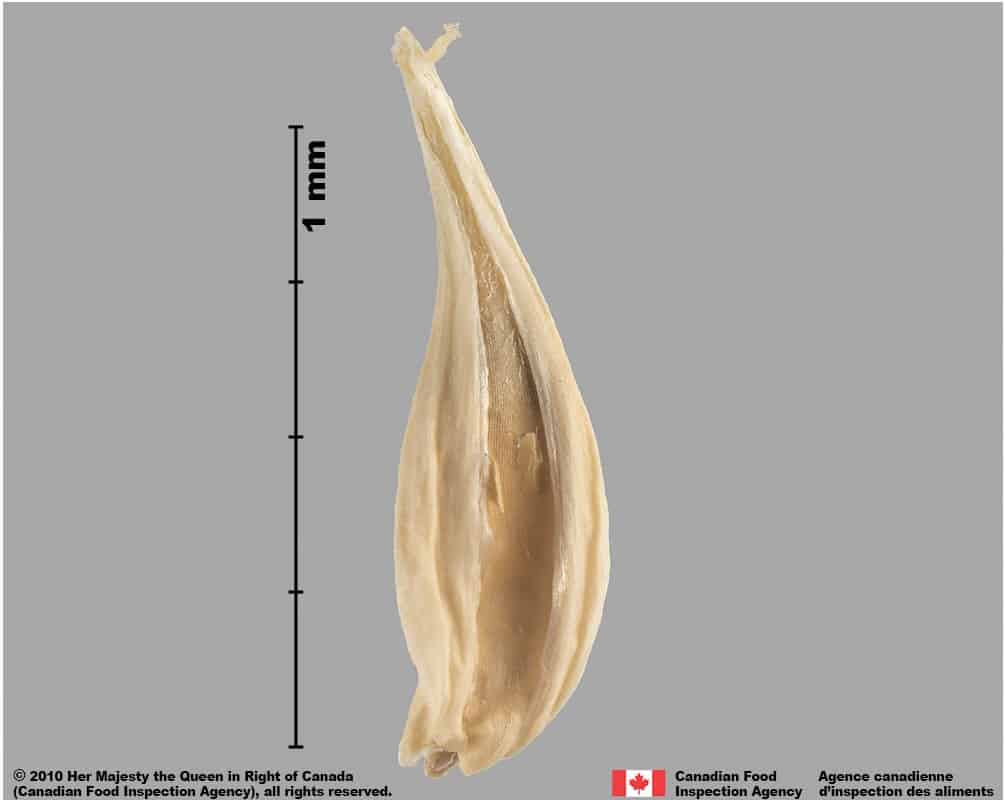
Cenchrus longispinus (long-spined sandbur) floret; palea view

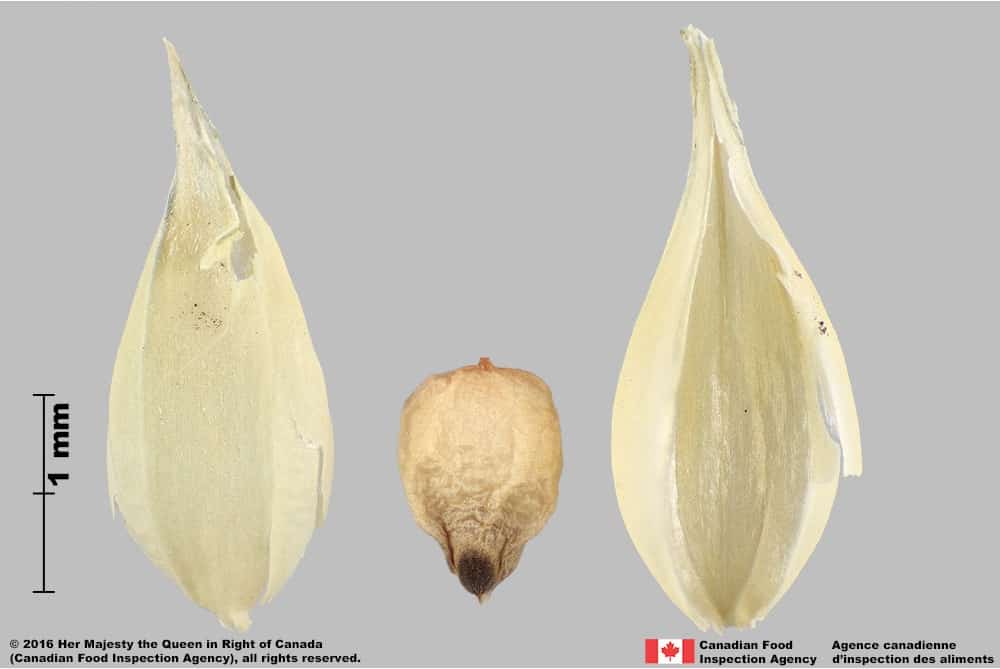
-
Caryopsis
Size
- Caryopsis length: 2.0 – 3.8 mm; width: 1.5-2.6 mm (Barkworth et al. 2003)
Shape
- Caryopsis is oval-shaped, compressed in edge view
Surface Texture
- Caryopsis surface is smooth
Colour
- Caryopsis is shiny straw-yellow or light brown coloured
Other Features
- Hilum is round and black-coloured at an end of one side of the caryopsis
- The embryo covers most of one side of the caryopsis
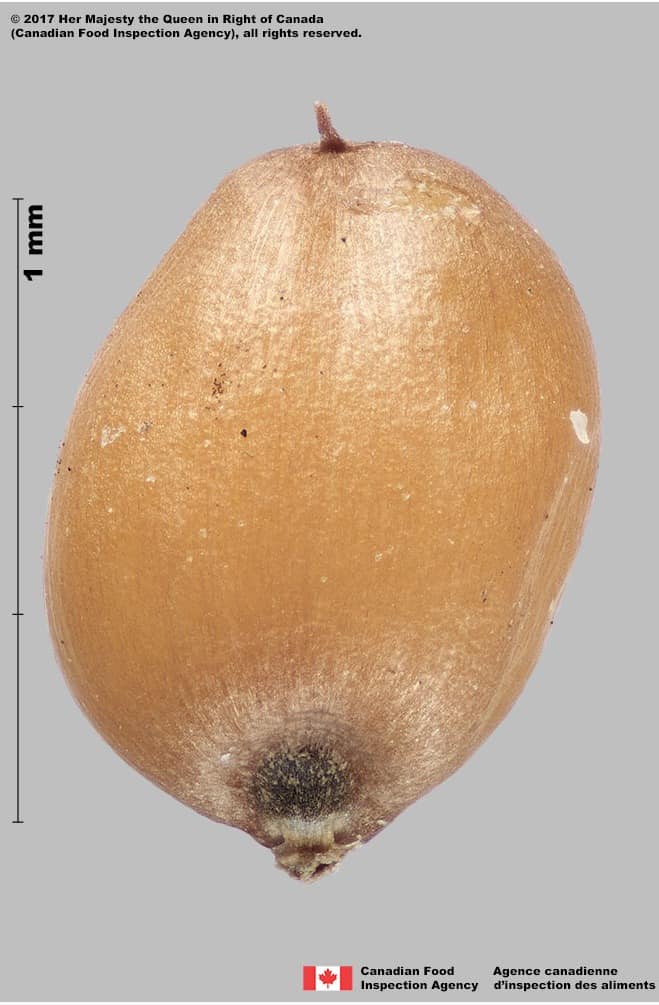
Long-spined sandbur (Cenchrus longispinus) caryopsis

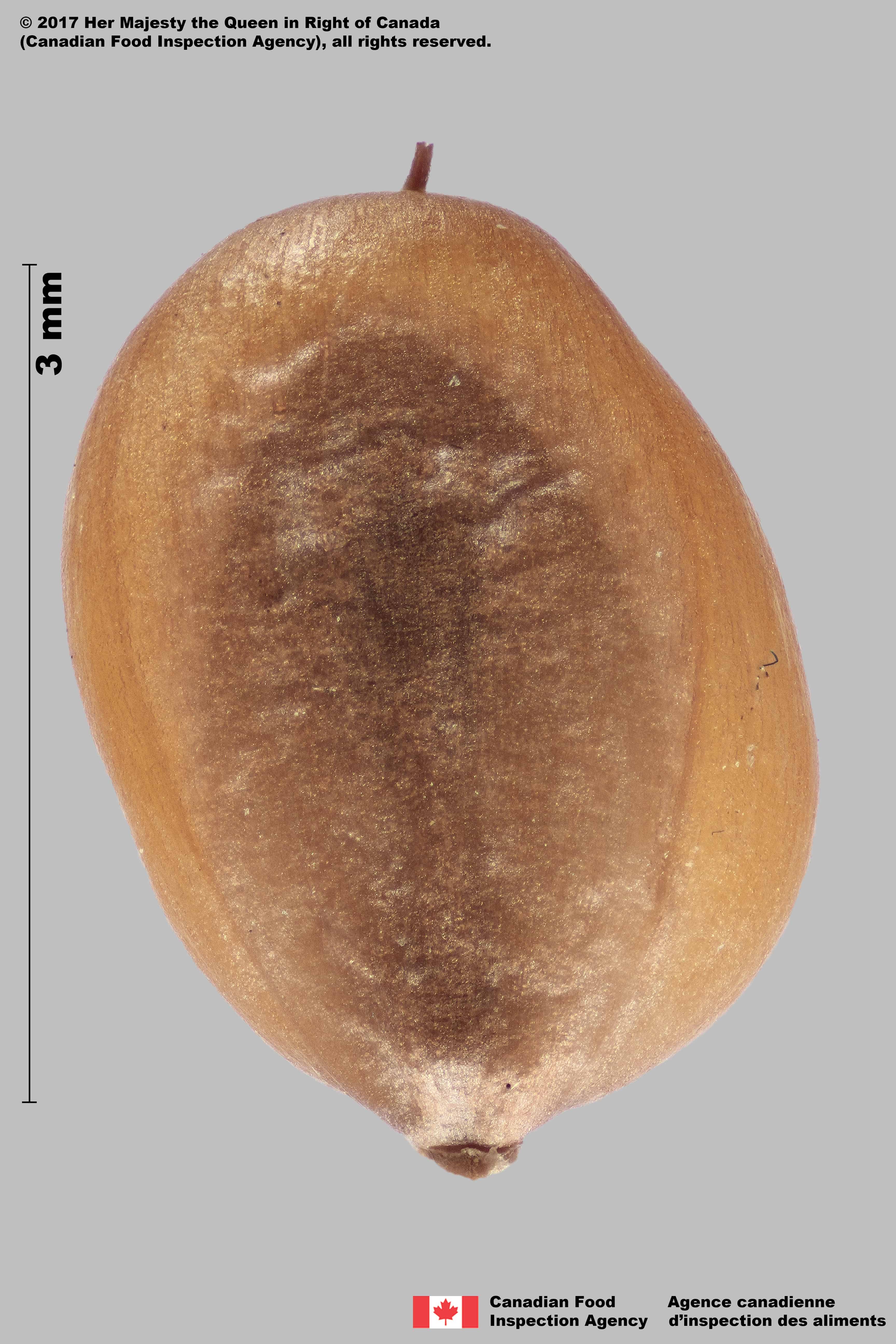
-
Embryo
Size
- Embryo is a rudimentary size compared to the caryopsis
Shape
- Embryo is oval, egg or wedge-shaped, in a lateral position on one side of the caryopsis
Endosperm
- Endosperm is hard and opaque white coloured
Identification Tips
CONSEILS POUR L’IDENTIFICATION
C. longispinus fascicles have 45-75 spines and bristles, the highest number of out of all the North American Cenchrus species (Barkworth et al. 2003), and they also have a hairy surface. An intact fascicle and magnification will be required to distinguish between similar Cenchrus species since some may also have fused spines in one or more series and may or may not be hairy.

Long-spined sandbur (Cenchrus longispinus) bur, side view









Additional Botany Information
AUTRES RENSEIGNEMENTS BOTANIQUES
Similar Species
ESPÈCES SEMBLABLES
Similar species are based on a study of seed morphology of various species, and those with similar dispersal units are identified. The study is limited by physical specimen and literature availability at the time of examination, and possibly impacted by the subjectivity of the authors based on their knowledge and experience. Providing similar species information for seed identification is to make users aware of similarities that could possibly result in misidentification.
Cenchrus tribuloides L.
C. tribuloides fascicles are generally larger (length*: 9.0 – 10.9 mm; width: 4.5 – 6.3 mm), have fewer spines than C. longispinus (843 spines, Barkworth et al. 2003) and the surface is densely hairy.
*Note: minimum and maximum of 6 fascicles in a normal range of this species using image measurement (ISMA 2020)
Cenchrus echinatus L.
C. echinatus fascicles are generally smaller (length*: 5.5 – 7.5mm; width: 2.8 – 5.4 mm), have only one ring of partially fused spines, and fewer total spines (5-25 spines, Barkworth et al. 2003) than C. longispinus.
*Note: minimum and maximum of 10 fascicles in a normal range of this species using image measurement (ISMA 2020)
Click to select species
Cliquez pour sélectionner les espèces
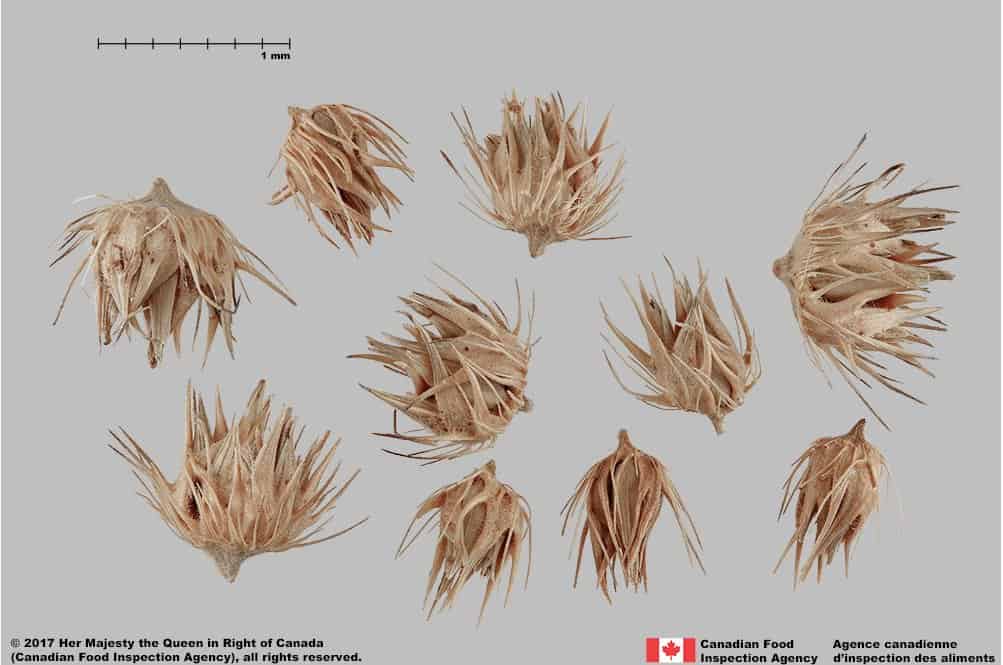
Cenchrus echinatus
Comparison Window
Fenêtre de comparaison
MAIN SPECIES
ESPÈCES PRINCIPALES
Cenchrus longispinus

Cenchrus longispinus
Poaceae
Long-spined sandbur (Cenchrus longispinus) bur, side view
MAIN SPECIES
ESPÈCES PRINCIPALES
Cenchrus longispinus

Cenchrus longispinus
Poaceae
Cenchrus longispinus
MAIN SPECIES
ESPÈCES PRINCIPALES
Cenchrus longispinus

Cenchrus longispinus
Poaceae
Long-spined sandbur (Cenchrus longispinus) bur, top view
MAIN SPECIES
ESPÈCES PRINCIPALES
Cenchrus longispinus

Cenchrus longispinus
Poaceae
Long-spined sandbur (Cenchrus longispinus) bur, side view
MAIN SPECIES
ESPÈCES PRINCIPALES
Cenchrus longispinus

Cenchrus longispinus
Poaceae
Long-spined sandbur (Cenchrus longispinus) spikelets
MAIN SPECIES
ESPÈCES PRINCIPALES
Cenchrus longispinus

Cenchrus longispinus
Poaceae
Cenchrus longispinus (long-spined sandbur) floret; palea view
MAIN SPECIES
ESPÈCES PRINCIPALES
Cenchrus longispinus

Cenchrus longispinus
Poaceae
Long-spined sandbur (Cenchrus longispinus) palea, caryopsis and lemma
MAIN SPECIES
ESPÈCES PRINCIPALES
Cenchrus longispinus

Cenchrus longispinus
Poaceae
Long-spined sandbur (Cenchrus longispinus) caryopsis
MAIN SPECIES
ESPÈCES PRINCIPALES
Cenchrus longispinus

Cenchrus longispinus
Poaceae
Cenchrus longispinus
SIMILAR SPECIES
ESPÈCES SEMBLABLES
Cenchrus echinatus

Cenchrus echinatus
Poaceae
Southern sandbur (Cenchrus echinatus) burs
SIMILAR SPECIES
ESPÈCES SEMBLABLES
Cenchrus echinatus
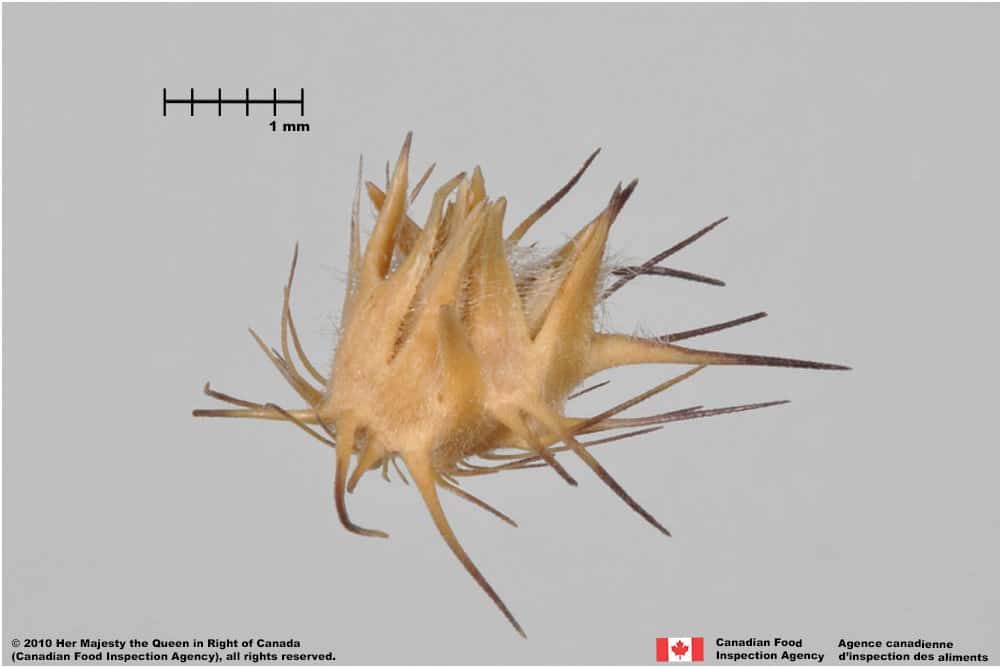
Cenchrus echinatus
Poaceae
Southern sandbur (Cenchrus echinatus) bur
SIMILAR SPECIES
ESPÈCES SEMBLABLES
Cenchrus echinatus
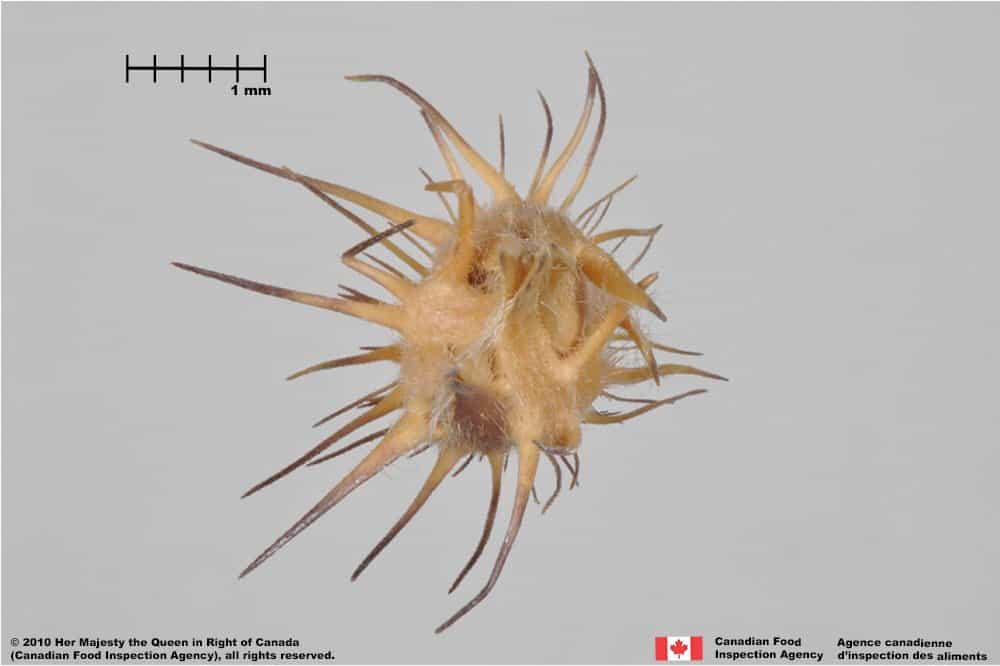
Cenchrus echinatus
Poaceae
Southern sandbur (Cenchrus echinatus) bur
SIMILAR SPECIES
ESPÈCES SEMBLABLES
Cenchrus echinatus
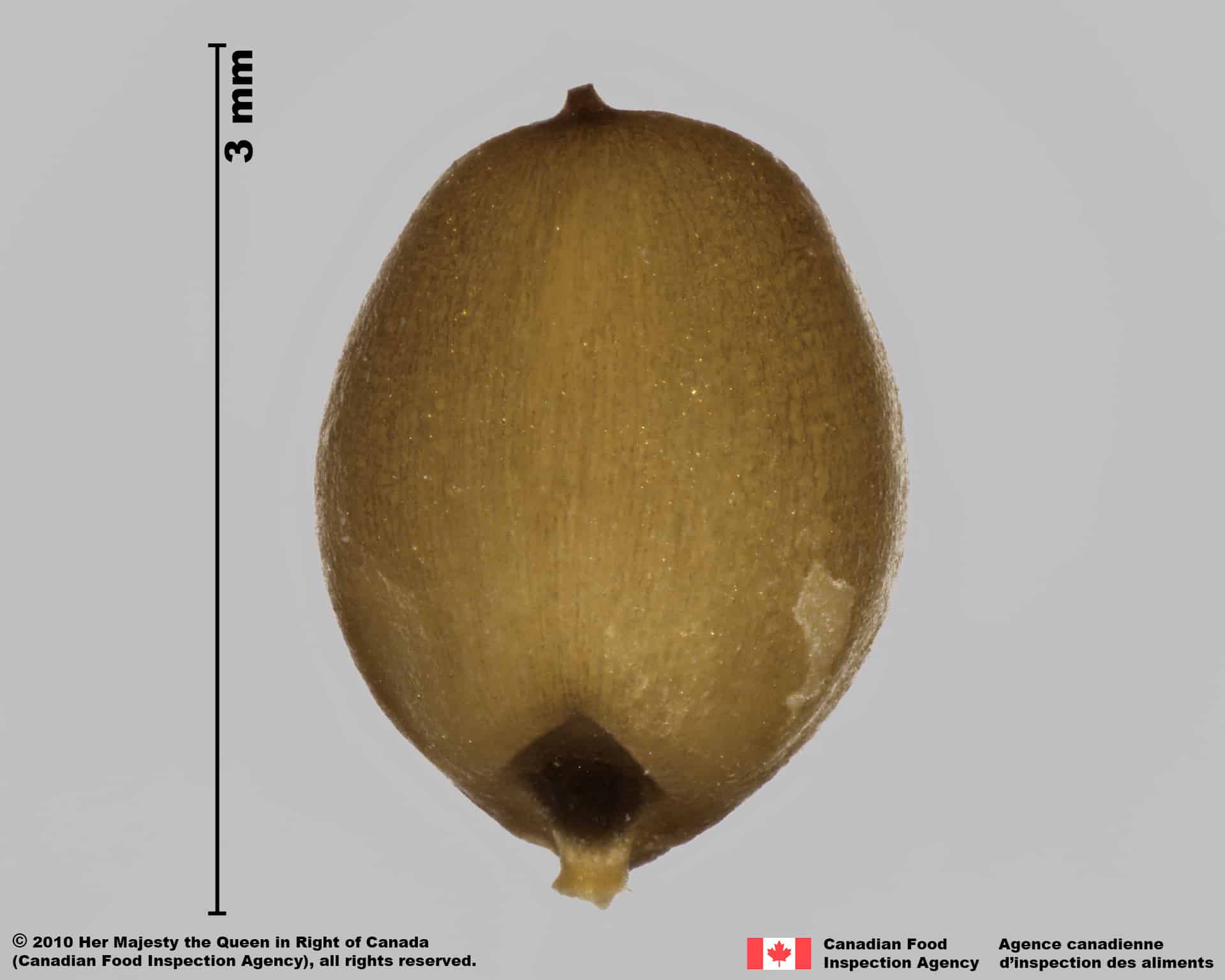
Cenchrus echinatus
Poaceae
Cenchrus echinatus
SIMILAR SPECIES
ESPÈCES SEMBLABLES
Cenchrus echinatus
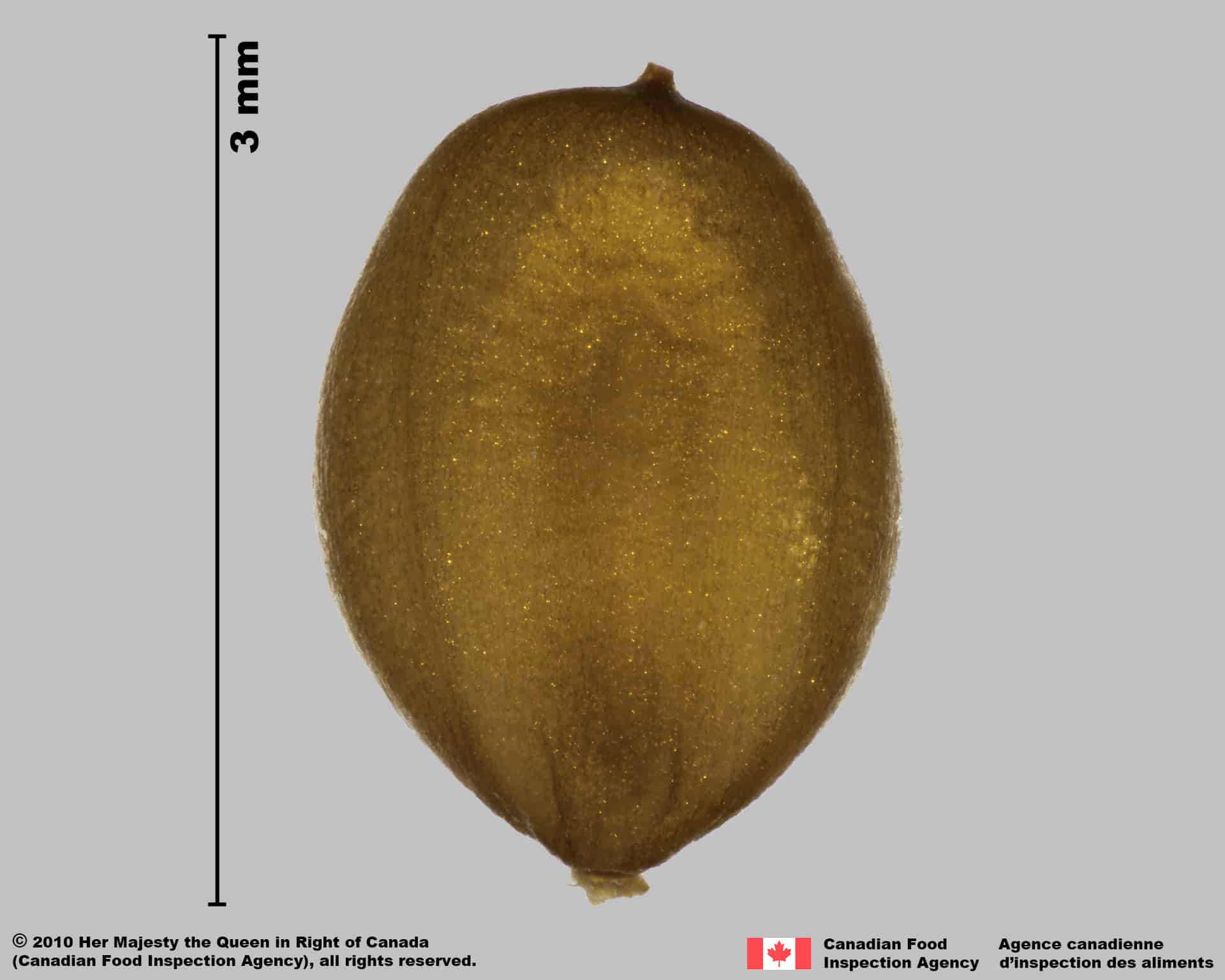
Cenchrus echinatus
Poaceae
Cenchrus echinatus
Need ID Help?
Besoin d’aide pour l’identification?
Reference(s)
Référence(s)
Anderson, R. L. 1997. Longspine Sandbur (Cenchrus longispinus) Ecology and Interference in Irrigated Corn (Zea mays) Weed Technology. 11: 667-671.
Barkworth, M. E., Capels, K. M., Long, S. and Piep, M. B., (eds.) 2003. Volume 25. Magnoliophyta: Commelinidae (in part): Poaceae, Part 2. Oxford University Press, New York, New York.
Boydson, R. 1997. Germination and emergence of longspine sandbur (Cenchrus longispinus). Weed Science 37: 63-67.
Brouillet, L., Coursol, F., Meades, S. J., Favreau, M., Anions, M., Bélisle, P. and Desmet, P. 2010+. VASCAN, the database of vascular plants of Canada. http://data.canadensys.net/vascan/ Accessed March 23, 2021.
California Department of Food and Agriculture. 2013. Encycloweedia: Data sheets. Cenchrus echinatus, Cenchrus incertus, Cenchrus longispinus, https://www.cdfa.ca.gov/plant/ipc/encycloweedia/weedinfo/winfo_table-sciname.html Accessed May 30, 2016.
Centre for Agriculture and Bioscience International (CABI). 2021. Invasive Species Compendium, CAB International, Wallingford, UK. https://www.cabi.org/ISC Accessed March 23, 2021.
Darbyshire, S. J. 2003. Inventory of Canadian Agricultural Weeds. Agriculture and Agri-Food Canada, Research Branch. Ottawa, ON.
Flora of North America (FNA) Editorial Committee, eds. 1993+. Flora of North America North of Mexico [Online]. 22+ vols. New York and Oxford. http://beta.floranorthamerica.org. Accessed December 29. 2022.
Global Biodiversity Information Facility (GBIF) Secretariat. 2022. https://doi.org/10.15468/39omei Accessed via https://www.gbif.org/species/5289731 Accessed December 29, 2022.
Government of Canada (GC). 2016. Canadian Weed Seeds Order. https://laws-lois.justice.gc.ca/eng/regulations/SOR-2016-93/page-2.html (English) https://laws-lois.justice.gc.ca/fra/reglements/DORS-2016-93/page-2.html (French)
International Seed Morphology Association (ISMA). 2020. Method for Seed Size Measurement. Version 1.0. ISMA Publication Guide. https://www.idseed.org/authors/details/method_for_seed_size_measurement.html
U.S. Department of Agriculture-Agricultural Research Services (USDA-ARS). 2021. Germplasm Resources Information Network (GRIN), https://npgsweb.ars-grin.gov/gringlobal/taxon/taxonomysimple.aspx Accessed March 23, 2021.



